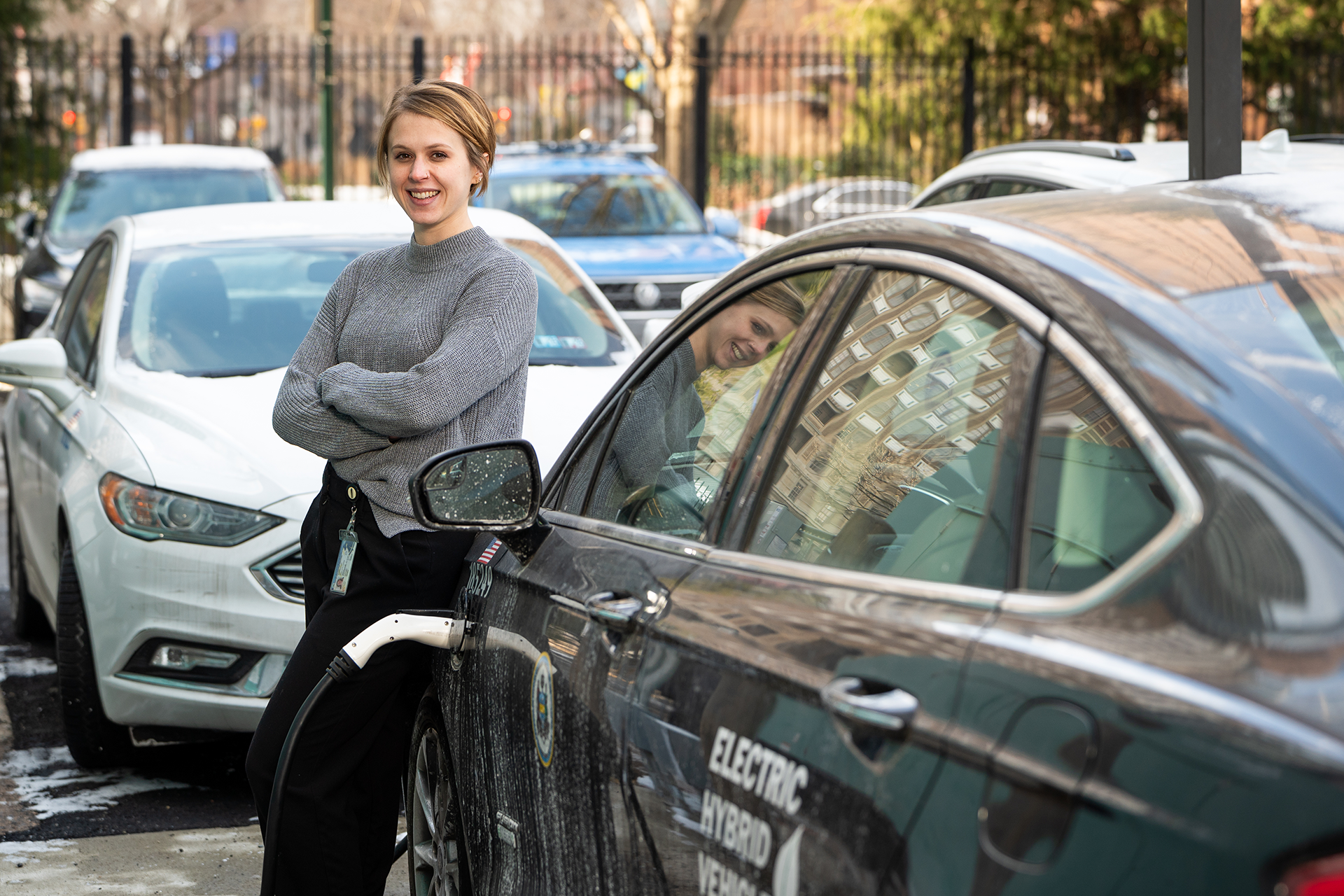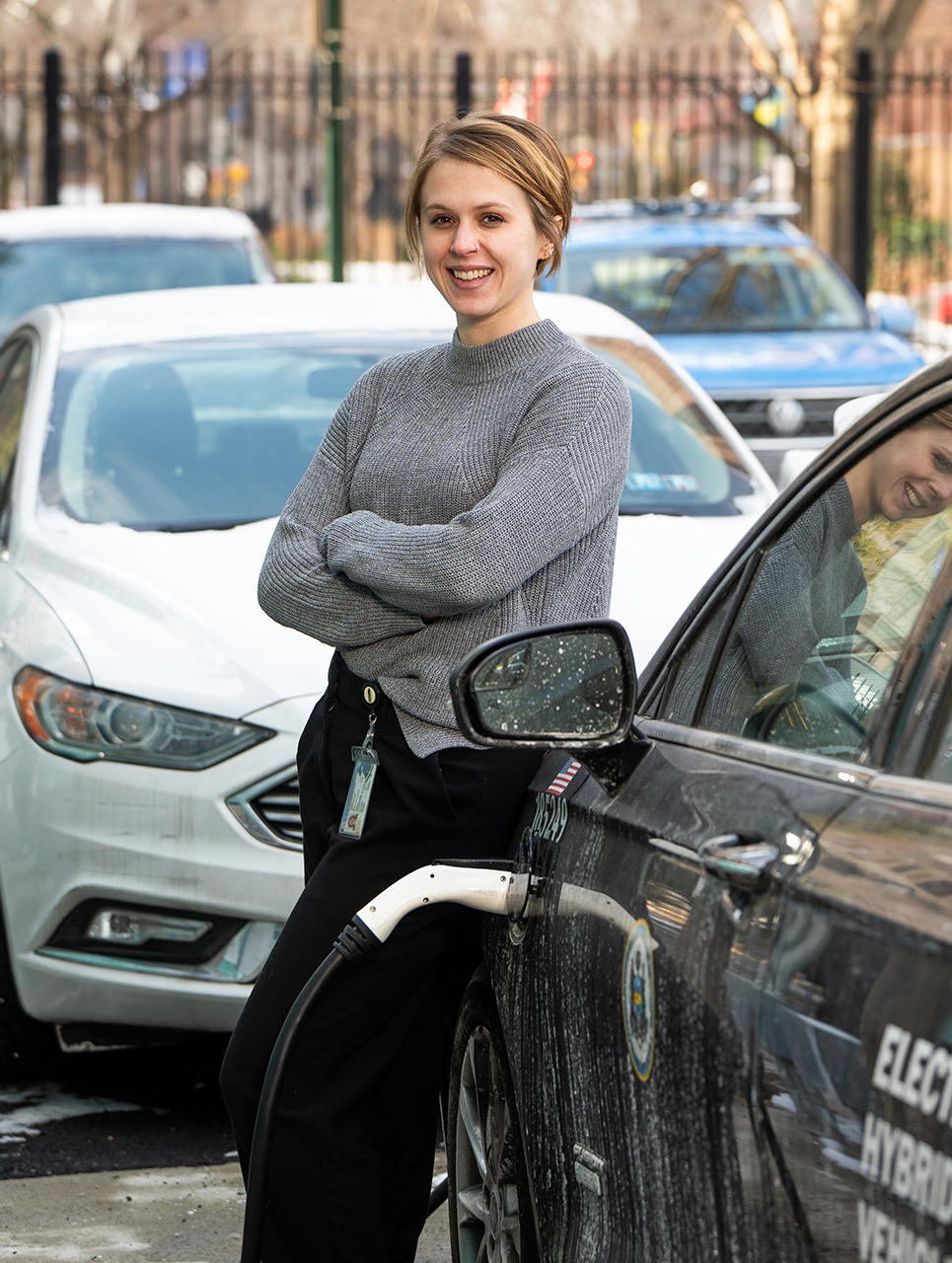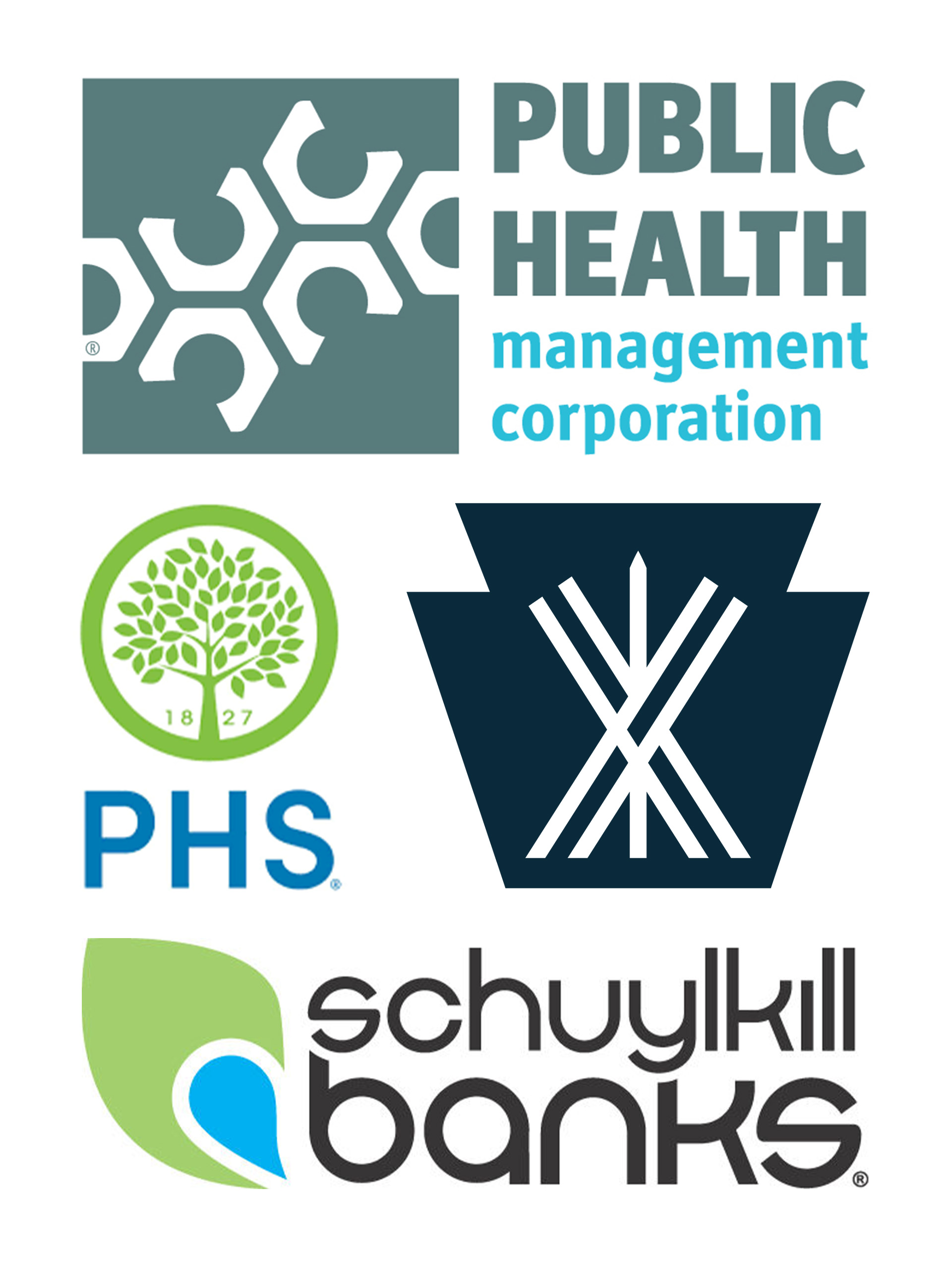As climate change caused flooding and extreme heat in the region and elsewhere, Mayor Jim Kenney’s administration set its sights on reducing Philly’s emissions.
Before the pandemic, the City of Philadelphia operated a fleet of approximately 5,500 vehicles — everything from sedans and SUVs to street sweepers and garbage trucks. These spewed over 50,000 metric tons of carbon dioxide into the atmosphere annually.
Based on estimations by Ask MIT Climate, that amount of CO2 is roughly equivalent to the yearly emissions of 3,333 Americans.
Then, in 2021, the City released its first plan to electrify its light- and medium-duty fleet over the course of the following decade. If every benchmark were hit, its vehicle operation-related emissions would drop by 42.7%.
There are now 300 light-duty electric vehicles in use in the City’s departments, up from just 34 when the transition was first announced. That translates into an estimated 670 tons of carbon dioxide saved. But, while these reductions are on track to meet the 2030 goals, they represent only a little over 1% of the City’s total.
Rather than purchasing a new fleet all at once, the City is taking a more gradual approach, phasing out gasoline-powered vehicles. As these vehicles age and break down, they are replaced with electric alternatives.
Savings, costs, concerns
The electrification process will benefit the City’s wallet in the long term. According to the 2021 plan, the overall savings from this effort would result in a 20% decrease in purchasing and operating costs. That would total over $12 million saved by 2030.
To keep up with the power demands of the increasingly electric fleet, however, Philly has to build out its charging infrastructure, which could cost anywhere from $1.6 to $19.3 million, depending on the kinds of chargers and distribution chosen.
According to officials, the City has more than doubled the number of municipally-owned chargers since 2020, with 109 in operation as of April 2024. Two high-powered chargers were also installed at a municipal fleet hub in 2024, with more on the way in the coming year.
In addition, the City has an annual contract with EVgo, an EV charging company, for discounted charging rates. In their press release, the company boasted a “100% renewable-powered network” achieved through a combination of on-unit solar paneling and the purchase of renewable energy credits.
Where is the electricity used to charge municipal EVs coming from? As of 2022, over half of electricity in Pennsylvania came from natural gas, according to the U.S. Department of Energy.
While natural gas produces lower carbon emissions than gasoline, diesel and coal, it is still a nonrenewable fossil fuel. Some groups have also expressed concerns about the danger of methane leaks from natural gas. According to the Fifth Assessment Report of the United Nations Intergovernmental Panel on Climate Change, the gas is 34 times stronger than CO2 at trapping heat over a 100-year period and 86 times stronger over 20 years.
Departmental differences
Nearly half of the new EVs belong to the Department of Licenses and Inspections. While that department accounts for less than a quarter of all municipal vehicles, it led fuel use and emissions in 2023.
In contrast, no electric vehicles were attributed to the police department, which makes up 28% of City vehicles and over a quarter of the City’s vehicle-related greenhouse gas emissions and fuel use.

“The Fleet Department and the emergency departments have been hesitant because they want to make sure they can refuel as quickly as possible,” says Charlotte Shade, the program manager of the City’s Building Energy Programs and leader of the most recent Municipal Clean Fleet Plan Update.
The City’s initial plan indicated that emergency vehicles would have to be considered separately from other vehicles, given their role in public safety, but also noted that “they too will eventually need to transition in order for the City to reach its climate goals.”
Vehicular challenges
Police cars aren’t the only vehicles causing concern as the switch to electric gets underway. Transitioning heavy vehicles, like garbage and fire trucks, is even more difficult than transitioning light-duty ones, according to the City. They have to be able to run nonstop, causing concerns about battery life, charging infrastructure and cost.
These worries haven’t stopped other cities, though. In 2021, Madison, Wisconsin, not only became the first North American city to purchase and use an electric fire truck but also migrated a fleet of other heavy-duty vehicles to use state-sourced biodiesel. Others, including Los Angeles, California; Portland, Oregon; Boulder, Colorado; and Gilbert, Arizona, have also made the switch. The trucks’ manufacturers, mainly Rosenbauer and Pierce, include diesel capacity in their trucks, allowing for greater flexibility.
When it comes to working with all of these different municipalities, seeing where people are — people are transitioning their police fleets, people are transitioning emergency vehicles like snow plows.”
— Rachel Aland, American Council for an Energy-Efficient Economy
“When it comes to working with all of these different municipalities, seeing where people are — people are transitioning their police fleets, people are transitioning emergency vehicles like snow plows,” says Rachel Aland, who leads the transportation team at the American Council for an Energy-Efficient Economy (ACEEE). “It really does run the gamut.”
According to the City’s 2024 report, the vast majority of heavy- and medium-duty vehicles — over 90% — still run on diesel fuel. Just 1.9% run on compressed natural gas, with little change expected anytime soon.
Political intrigue
Politics will likely also play a role in the future of Philly’s fleet electrification, as monetary incentives make the change far more affordable. Programs like the Alternative Fuels Incentive Grant and Driving PA Forward offer hundreds of thousands of dollars to municipalities looking to make the switch. Many cities have reaped additional benefits through the Inflation Reduction Act.
November’s elections, however, have cast doubt on the future of these incentives. An executive order issued by President Donald Trump in February paused Inflation Reduction Act funding. City officials declined to comment on how the order will impact fleet electrification efforts.
With Republicans winning not only the White House but also the U.S. Senate seat formerly held by Bob Casey and the races for Pennsylvania attorney general, auditor general and state treasurer, additional funding cuts and program elimination could be on the horizon. Philly could, for instance, be on the hook for millions of dollars’ worth of EV purchases, but that doesn’t mean the City should stop, ACEEE’s Aland says.
“It can pencil out without incentives. It depends on the vehicle and the duty cycle, how it’s being used,” she says. “The technology is there for a diverse array of vehicles. It’s not just about the light-duty fleet anymore.”



 This special section is a part of Every Voice, Every Vote, a collaborative project managed by The Lenfest Institute for Journalism. The William Penn Foundation provides lead support for Every Voice, Every Vote in 2024 and 2025 with additional funding from The Lenfest Institute for Journalism, Comcast NBC Universal, The John S. and James L. Knight Foundation, Henry L. Kimelman Family Foundation, Judy and Peter Leone, Arctos Foundation, Wyncote Foundation, 25th Century Foundation, Dolfinger-McMahon Foundation, and Philadelphia Health Partnership. To learn more about the project and view a full list of supporters, visit
This special section is a part of Every Voice, Every Vote, a collaborative project managed by The Lenfest Institute for Journalism. The William Penn Foundation provides lead support for Every Voice, Every Vote in 2024 and 2025 with additional funding from The Lenfest Institute for Journalism, Comcast NBC Universal, The John S. and James L. Knight Foundation, Henry L. Kimelman Family Foundation, Judy and Peter Leone, Arctos Foundation, Wyncote Foundation, 25th Century Foundation, Dolfinger-McMahon Foundation, and Philadelphia Health Partnership. To learn more about the project and view a full list of supporters, visit 





